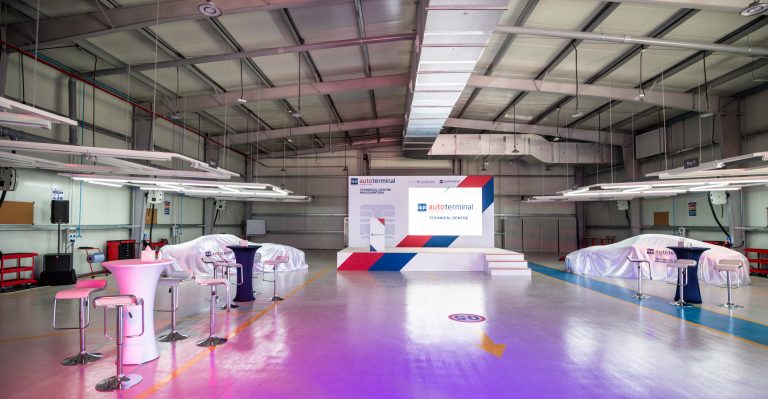Autoterminal Khalifa Port, a joint venture between Abu Dhabi Ports and Autoterminal Barcelona, the operator of the advanced RoRo terminal at Khalifa Port, has unveiled an all-new technical centre aimed at diversifying the portfolio of services on offer to customers.
As the first facility of its kind in the region, the centre provides a wide range of value-added services for customers within the Middle East’s automotive market. From pre-delivery inspection to accessory fitting, automotive importers stand to benefit from reduced labour and transportation costs, as vehicles can be prepared for showroom display or the receiving consignee without needing to visit a third-party facility.
Saif Al Mazrouei, Head of Ports Cluster at Abu Dhabi Ports said: “Since its founding in 2018, Autoterminal Khalifa Port has quickly established itself as one of the leading choices for automotive distribution moving to and from the Gulf.
“Managed by a dedicated team committed to innovation, Autoterminal Khalifa Port has not only flourished in the market, but has become a role model for others in the industry to follow. The new Technical Centre is a culmination of that continuous drive for improvement and opens new opportunities for our customers to benefit from.”
Pierre Algeo, CEO of Autoterminal Khalifa Port, said: “Furthering our directive to become the leading distribution hub for automotive vehicles from East Asia, the launch of our new technical centre opens new opportunities for our customers.
“Using our centre, clients will be able to conduct any necessary modification prior to final delivery streamlining their respective operations and achieving improved cost-savings. We are delighted to be the first in the region to offer this added benefit directly within our terminal.”
In addition to offering car washing, pre-delivery inspection and polishing on site, the facility will have the capability to conduct smart repairs, as well as accessorise and convert vehicles. The site will also provide a refuelling service in the near future, which will ensure vehicles are fuelled before their departure from Khalifa Port.
The processing of vehicles through Autoterminal Khalifa Port, including the technical centre, is carried out via the Carsys app, a superior automotive terminal management platform.
Developed in-house, the app allows users to scan and log vehicles passing through the facility. In addition to ensuring accurate reporting and guaranteeing the traceability of all operations carried out on the vehicles, the Carsys app also allows its users to track the movement of their cars in real-time.
Xavier Vázquez, CEO of Autoterminal Barcelona, said: “The new technical centre at Autoterminal Khalifa Port is a culmination of expertise gained from over 25 years of experience in managing automotive port terminals.
“Through our close collaboration with Abu Dhabi Ports, we are delivering advanced new opportunities and benefits for our customers, while at the same time pushing the industry standard to new heights.”
The new technical centre is the latest addition to Autoterminal Khalifa Port and expands the already extensive capabilities of the platform, which is considered the ideal Ro-Ro terminal in the GCC. Featuring pollution free storage for up to 15,000 vehicles, Autoterminal Khalifa Port offers multimodal solutions for automotive customers looking to either import vehicles to the UAE or distribute from the Middle East to East Africa and Western India.

























